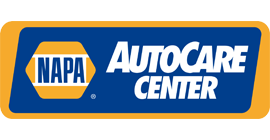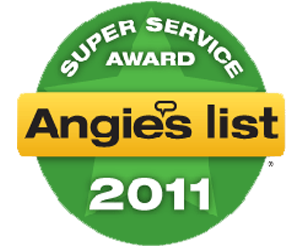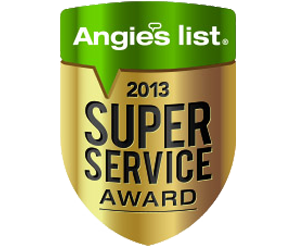It Pays to Take Care of Your Transmission at AutoChoice Service Center Inc.
Posted April 30, 2018 9:56 AM
If you've been paying attention, you've noticed that vehicle engines are getting more and more powerful in Bloomington. At the same time, they are getting better and better fuel economy. I've gotta tell 'ya, most of that's because of technological advances in transmissions. To get a better understanding of why that is, let's talk bicycles.
You've probably seen plenty of cyclists on Bloomington roads. Perhaps you ride yourself. Then you know that a cyclist's cadence is the number of times per minute he or she pedals. The ideal pedal speed is the zone where they can most efficiently generate power over a sustained period of time. The experienced Indiana cyclist uses her gears to keep her pedal speed in the ideal zone whether she's climbing a hill, cruising on a flat stretch or killing a downhill.
Think of it this way: if you have a 1-speed bike, you really have to pump hard to get up to speed. Your top speed is limited by how fast as you can pedal. And if you're climbing a steep Indiana hill – forget about it.
Now let's add a couple of gears: one lower and another one higher. With the lower first gear, you can get up to your ideal pedal speed more quickly. When you shift to second, your pedal speed drops below ideal for a while as you work to get back to peak efficiency. Same thing happens when you shift to third, but now you can go much faster than you could with a 1-speed bike using the same effort. Add more gears and you can see that it's much easier to maintain ideal pedal speed. The result, quicker starts, better hill climbing, higher top speed and, most of all, a lot less fatigue for the Bloomington rider.
Like a cyclist on a bike, every vehicle engine has an ideal engine speed called its power band. When an engine is running in that zone, it can make power very efficiently. It's the vehicle transmission's job to keep the engine in the power band over a wide range of operating conditions. Today 5 or 6 speed automatic transmissions are pretty much the minimum, and 7 and 8 speeds are fairly common in Bloomington.
Obviously these sophisticated transmissions are very expensive. In fact, next to your vehicle engine, your transmission is the most expensive component in your vehicle, so it pays to take good care of it. Your manufacturer has a recommended service interval for changing your old, contaminated transmission fluid. Servicing your transmission on schedule at AutoChoice Service Center Inc. keeps it operating at its best and can prevent costly damage. Ask your friendly and knowledgeable AutoChoice Service Center Inc. advisor if it's time for transmission service. Come see why smart Bloomington drivers trust their transmissions to AutoChoice Service Center Inc..
Give us a call.
AutoChoice Service Center Inc.
2009 S. Yost Ave.
Bloomington, Indiana 47403
812-339-9898
Power Steering Service in Bloomington
Posted April 16, 2018 7:39 AM
Most Bloomington drivers are too young to remember life before power steering - cranking those great big steering wheels! It was a pretty good workout. Now power steering is standard. Let's look at how it works. The heart of any power steering system is its pump. The pump pressurizes the power steering fluid that provides assist for steering. Most pumps are driven by a belt that is run by the engine; a few are electrically powered. A high-pressure hose passes fluid from the pump to the steering gear. A low pressure hose returns the fluid back to the pump.
These hoses can develop leaks, so it is a good idea for Bloomington drivers to have them inspected at every oil change. Low fluid can damage the power steering pump. That is why power steering fluid level is on the checklist for a full-service oil change. The fluid needs to be compatible with the hoses and seals, so check your owner's manual for the right type - or just ask your friendly and knowledgeable pros at AutoChoice Service Center Inc. in Bloomington.
The fluid cleans, cools and lubricates the power steering system. It breaks down as the years go by and collects unwanted moisture, so Bloomington drivers need to replace it from time to time. Many vehicle manufacturers specify power steering service intervals. Unfortunately, this important service is sometimes left off the car maintenance schedule for many of us. So, when in doubt, every 25,000 miles/40,000 km or two years is a good fallback. Your technician at AutoChoice Service Center Inc. will use a detergent to clean the system, flush out the old fluid and replace it with the good stuff.
Here are some warning signs of trouble with your power steering: It's harder to turn the wheel, there's erratic power assist, you hear loud whining coming from the pump (which may be difficult to hear over the loud whining coming from the backseat), you have to top-off the fluid frequently, or you hear squealing belts. Remember to never hold the steering wheel to the far right or left for more than a few seconds at a time. That will wear out your power steering pump quickly.
Other steering components can be bent or damaged from wear or hard knocks: ball-joint, idler-arm, steering-gear, steering-knuckle and tie rod to name a few. Warning signs here are steering play, wandering, uneven tire wear and an off-center steering wheel. An annual alignment check at AutoChoice Service Center Inc. in Bloomington will reveal bent or damaged steering components.
Most SUV's, pick-ups and rear-wheel-drive cars need regular front-wheel-bearing service.
The bearings should be cleaned and inspected. If they are excessively worn, they need to be replaced. The bearings are then repacked in clean grease. The team at AutoChoice Service Center Inc. also recommends the wheel-seal be replaced when the bearings are serviced. Like everything else, check your owners' manual maintenance schedule. It's usually required around every two years or 40,000 miles/64,000 km. If you drive through water in the Bloomington area, the bearings will need service more often.
AutoChoice Service Center Inc.
2009 S. Yost Ave.
Bloomington, Indiana 47403
812-339-9898
Know Your Towing Limits in Bloomington
Posted April 8, 2018 5:51 AMSome Bloomington drivers figure that anything they can attach to their trailer hitch can be towed by their vehicle. Nope. If you're going to do any towing around Bloomington, you should be aware of safety issues, Indiana towing laws and potential liability.
Understanding tow ratings is important for safe towing. A tow rating is the weight limit that your vehicle can safely tow. They calculate the tow rating for every vehicle, but different options on the vehicle can affect that rating. Bloomington drivers need to read the towing section in their owner's manual to get the specific tow rating for the vehicle they own.
Your trailer hitch also has a weight limit, and it may not match the tow rating for your vehicle. Your vehicle may be rated for 10,000 pounds (4,500 kg), but if you have a 2,000-pound (900 kg) hitch limit, you shouldn't be towing more than 2,000 pounds (900 kg). If you tow a 10,000-pound (4,500 kg) trailer on that hitch, it could break free and you would be liable for any resulting damages.
Another example, one popular pick-up truck has a tow rating of 10,300 pounds (4,600kg). But in the owner's manual, it specifies that a sway control device be used for trailers weighing over 2,000 pounds (900 kg) and that a weight-distributing hitch is required for trailers over 5,000 pounds (2,300 kg). If the vehicle owner tows a 6,000-pound (2700 kg) trailer without a weight-distributing hitch and ends up in an accident, the owner will be held liable for not complying with the towing requirements in Indiana .
Bloomington auto owners also need to keep in mind that tow weights include the weight of passengers and cargo inside the tow vehicle. So if your tow rating is 7,000 pounds (3,200 kg), and you're carrying 700 pounds (320 kg) of passengers and cargo, you can only tow a trailer weighing up to 6,300 pounds (2,880 kg).
Two numbers that Bloomington drivers should be aware of are the GVWR and the GCWR. These codes are usually imprinted on the inside of the driver's side door. GVWR stands for gross vehicle weight rating. Take GVWR and subtract the total weight of the vehicle, and you have the maximum weight the vehicle can safely carry in passengers and cargo. GCWR stands for Gross Combined Weight Rating. Take that number, subtract the weight of the tow vehicle and the trailer, and you have the maximum weight of passengers and cargo that the tow vehicle and trailer together can safely carry.
This may seem a bit complicated, but you ignore these ratings at your own peril. If you haul or tow loads over the maximum ratings around Indiana , you become liable in event of an accident.
Local Bloomington laws require that safety chains be attached when towing a trailer. Some Indiana jurisdictions may require trailer brakes as well. Others mandate trailer brakes only in certain situations. If you are going to tow a trailer, you should find out the local Bloomington laws regarding trailer brakes and hitches, as well as weight and length restrictions.
To tow safely, Indiana drivers also need the proper tires on the tow vehicle. Tires need to be in good condition with adequate tread, and they need to have a load rating high enough to handle the weight of the trailer. Your trained AutoChoice Service Center Inc. tire professional can help you select the right tire to use when towing around Bloomington.
Your 's owner's manual is your primary source for auto advice regarding towing since it is specific to your vehicle. Be sure to read it carefully before doing any towing. And as always, keep your preventive maintenance up-to-date, and practice good car care to ensure the safety of your vehicle on the road—especially when pulling a trailer.
AutoChoice Service Center Inc.
2009 S. Yost Ave.
Bloomington, Indiana 47403
812-339-9898












